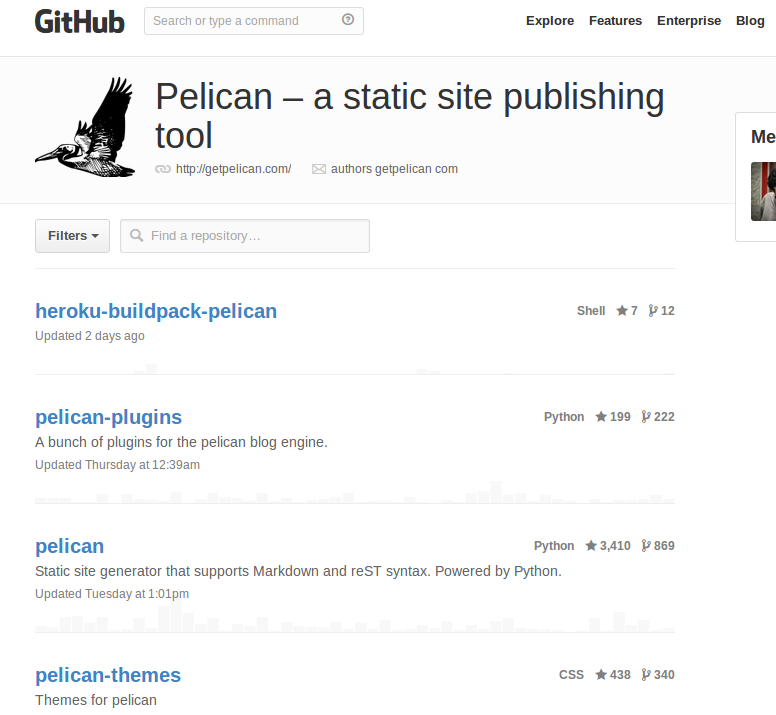How to publish a pelican site on Github
Published on , under Programming, tagged with pelican, git and python.

This is a step by step guide on how to publish a pelican website on Github, and how not to get the site's codebase so tightly coupled to where it is deployed. If in the future we want to publish it somewhere else, there isn't much to be changed. Another thing to mention is that even though we reference pelican here, the process I'll show you can be applied to almost any static site generator tool.
1) Create a repository in Github following this exact naming convention:
username.github.io
2) Setup your pelican site on a separate repository, ie my-blog, and
start adding content to it. You'll notice that the generated output goes
by default to a folder (conveniently) named output, but it can be changed to
something else with the OUTPUT_PATH setting in your pelicanconf.py file
3) We will make use of git submodules to point our output directory to the repo created in step 1, so that it holds what's going to be published in Github.
git submodule add https://github.com/username/username.github.io.git output
Adding a git submodule will create another version controlled file called
.gitmodules with the following content:
[submodule "output"]
path = output
url = https://github.com/username/username.github.io.git
ignore = all
As the output directory is now managed by the independent git repository from step 1, we don't want to have to version-control it again from our pelican site repo, and that's why we added the last ignore statement.
4) Pelican has two types of configuration files, pelicanconf.py for general
settings, and publishconf.py that is used for publishing, as you probably
guessed. Pelican's Makefile comes with a built-in command to generate the
output that will be published:
make publish # generates output using publishconf.py
But before running it, make sure the following settings are in publishconf.py:
# don't delete our .git submodule dir
DELETE_OUTPUT_DIRECTORY = False
# use the correct abs url
SITEURL = 'http://username.github.io'
RELATIVE_URLS = False
Heads up! Pelican regenerates the output automatically when running the http
server and making changes to the contents. So make publish should be the last
command to be run before releasing.
5) Now every time you regenerate your site contents and want to publish them, cd
to your output directory and run git commands (like add, commit, push, etc).
Those commands will only take effect on your repo from step 1, because you are
inside the output submodule. Once you push your new output content to your master
branch of username.github.io, Github will take some minutes to update your site.
And that's it.
Happy blogging!